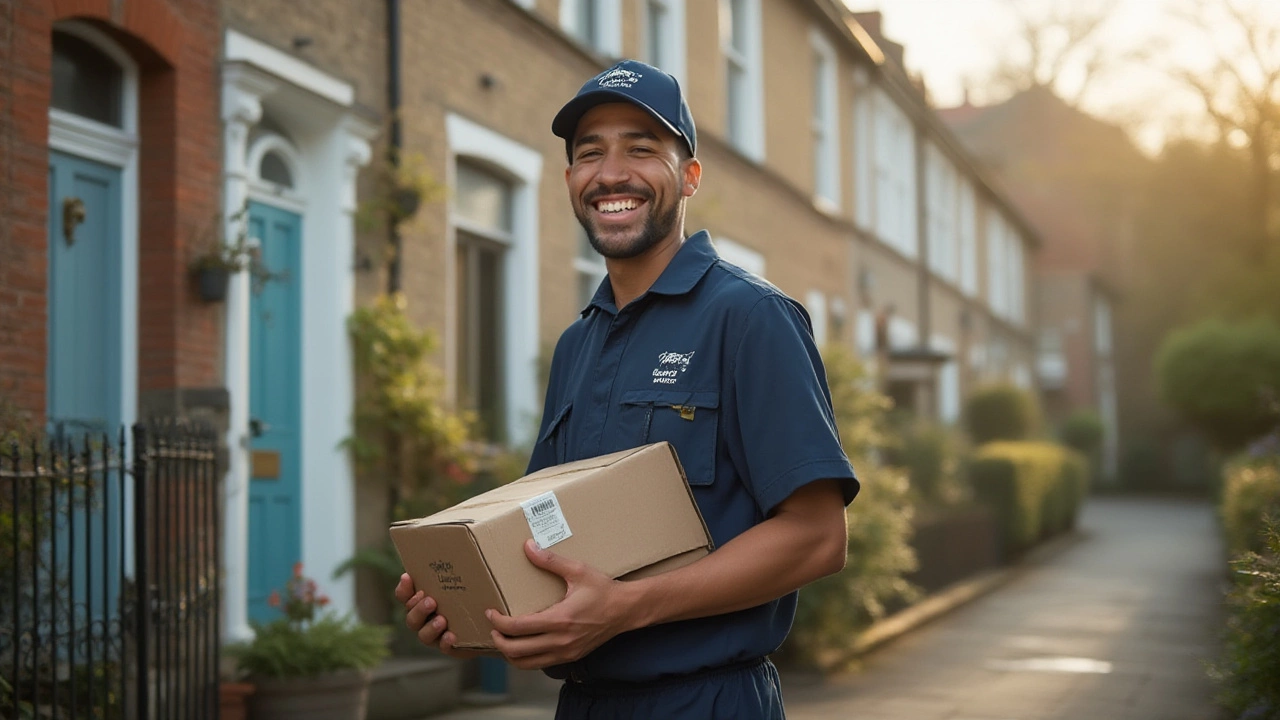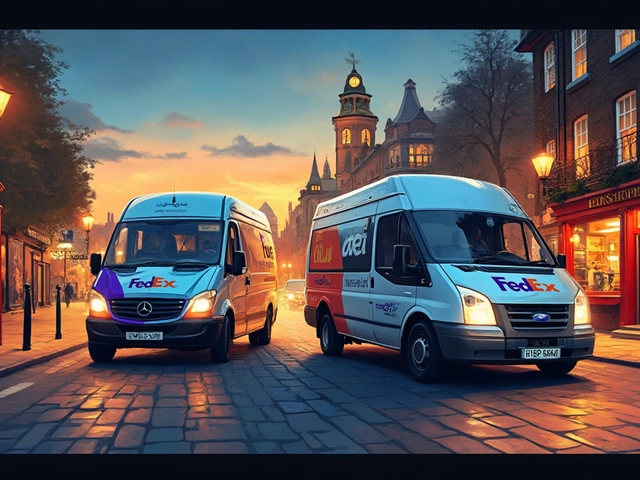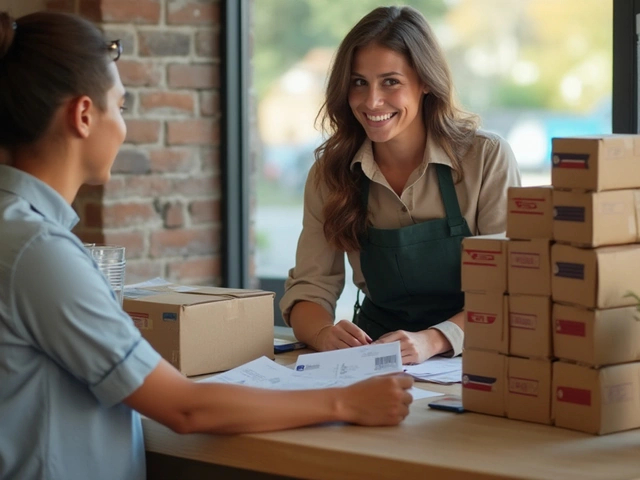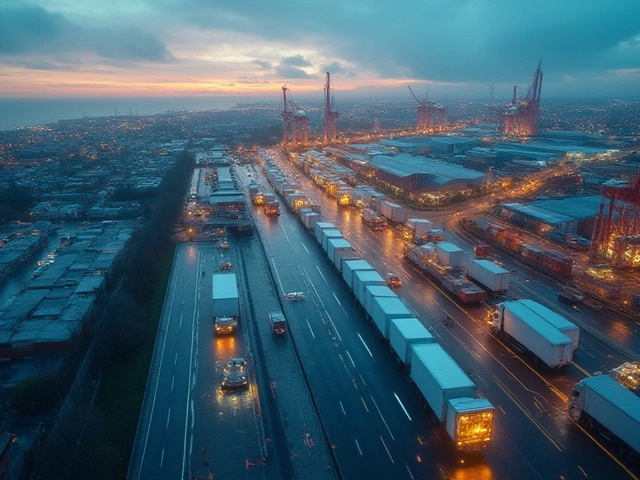It’s honestly wild how many people still have that little jolt of uncertainty when they order a package: will the courier guy actually deliver this to my door, or am I about to receive a mysterious pickup slip and a puzzle to solve? If you’ve ever squinted through your peephole hoping to spot a uniformed courier—or darted down to the building lobby in your pajamas—you know the feeling. Door to door is the promise, but the reality sometimes surprises even the most seasoned online shoppers. Let’s unpack what doorstep delivery really looks like in 2025, why the process isn’t as simple as “ring the bell and hand it over,” and what you need to know to avoid headaches.
How Does Door to Door Delivery Actually Work?
Every day, millions of parcels—from urgent legal documents to the latest box of impulse buys—zigzag through a vast network of vans, planes, and sorting hubs before arriving at someone’s home. That “courier guy” at your doorstep is just the final face in a journey that started miles away. Most major courier companies—think DHL, FedEx, UPS, and countless regional players—have some version of door to door delivery as their bread and butter. The model, in theory, is simple: you send a package, they pick it up if needed, and a person delivers it right to the recipient’s door. But there are so many twists in reality.
First, let’s squash a myth: the vast majority of courier deliveries in urban and suburban areas are indeed door to door. In dense cities, where high-rises and intercoms are the norm, couriers are usually expected to hand over the package at your apartment flat, sometimes even up a few flights of stairs. In suburban neighborhoods, your doorstep, porch, or mailbox are the standard drop zones. Remote areas, though, can be trickier. Some addresses, especially rural ones far off familiar roads, might land you at the end of a long driveway or the nearest access point. That’s not lazy—it often comes down to time, access, or even safety.
Certain items can alter the dance. Large items—refrigerators, treadmills, even a six-foot plush bear—sometimes trigger “threshold delivery.” That means the courier leaves it at your front door or just inside, but won’t help with placement or setup. Perishable or sensitive parcels may require in-person signatures, skipping the whole “leave it at the door” approach. Security-apartment complexes or condos might require a code or front desk sign-off. Lost intercom privileges? You could be trekking to the nearest pickup point. In gated communities, package access rules often dictate where the handoff occurs. Which brings us to the actual logistics.
Most couriers now use real-time tracking, so you can literally watch your parcel creep closer on an app map. It’s not just for fun; it improves accountability. Roughly 83% of parcels from the world’s leading couriers reportedly arrive at the recipient’s actual address first try. But what about the slip-in-your-mailbox disappointments? There are legit reasons they happen—no safe place to leave the parcel, signature required, weather hazards, or simply not being able to access your door. Door to door doesn’t always mean hand-in-hand delivery.
Here’s a reality check in the form of hard numbers:
| Courier Company | Door to Door Delivery Rate (2024) | Exceptions/Notes |
|---|---|---|
| FedEx | 82% | Signature required for some packages, rural drops sometimes redirected |
| UPS | 81% | Apartment complexities can cause lobby drops |
| DHL Express | 88% | Global coverage strong; some countries have ‘lockbox’ limitations |
| Aramex | 67% | More frequent third-party collection points in challenging zones |
Truth is, door to door delivery is still king, but exceptions are more common than some customers realize—especially if you live outside urban hubs or your building is a maze. Still, the system works, and it keeps getting smarter as technology catches up.
Factors That Affect Door to Door Courier Deliveries
If you expected read-and-forget simplicity here, brace yourself. Door to door delivery is the dream, but the actual outcome depends on a buffet of factors, starting with your home’s location. Urban addresses are the gold standard: clear, easy to reach, almost always serviced right to your door. Suburban and residential zones are pretty reliable, too—unless the driveway is a mile long, or the dogs look extra menacing that day.
Apartment buildings are the wild card. If your courier can actually get into your building, reach your floor, and navigate the right hallway, they’ll usually bring it right to your door. But missing intercoms, locked lobbies, or complex security systems mean many parcels wind up at a front desk, in the mailroom, or—worst-case scenario—at a collection locker down the street. Not the courier’s fault; sometimes, it’s your building playing keep-away.
Let’s talk weather. Stormy days, icy paths, and anything that threatens the safety of the courier can prompt companies to skip the door entirely. In places like Canada or northern Europe, “porch delivery” can morph into “leave in garage” or “deliver to neighbor.” Security also matters—if there’s nowhere safe to stash a parcel (think visible, uncovered porches in high-traffic areas) the deliverer might leave a collection notice instead. High-value or sensitive shipments often trigger signature-on-delivery protocols, pushing delivery windows later or requiring you to be physically present to receive the item.
Of course, the options you select when ordering matter too. Most couriers let you choose delivery preferences now. You can request a specific window, add instructions (“leave with neighbor in #19,” “put under back porch bench”), or authorize “leave at door”—if you’re willing to risk porch pirates. Some services now even offer “contactless proof of delivery,” snapping a photo to confirm—and sending it straight to your phone. That’s a step up for accountability, but also lets you race home if an expensive new gadget just arrived!
Finally, there’s the story of failed attempts. Automated systems now make it easier to reschedule deliveries or reroute them to pickup locations near your work or home. UPS’s Access Point, FedEx Office, and DHL Lockers are exploding in popularity, partly because people want more control over when and where they snag their packages. If you do miss the courier, the company will usually make a second or even third attempt, especially for signature-required or valuable goods. Some deliver after hours, or on weekends, but options vary wildly by area.
If ever in doubt, look up your courier’s local policies. Each has its quirks, so what flies in Berlin won’t always hold in Los Angeles or rural India. It’s always best practice to keep an eye on your tracking link and open the delivery app when you’re expecting something important. That’s the simplest way to intercept surprises before they happen!
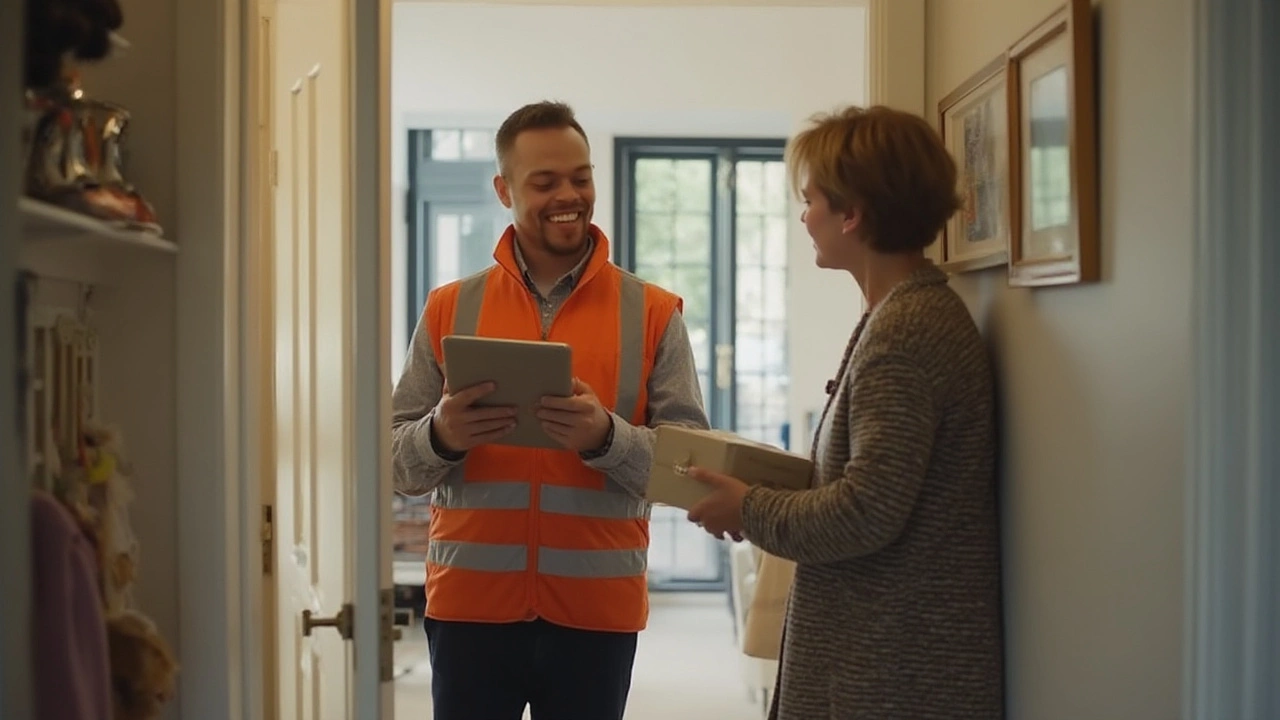
Tips for Seamless Door to Door Deliveries
Most headaches with home deliveries can be headed off with a little practical magic. Rule number one—accuracy. Double-check your address every time you order, including the apartment or unit number and buzzer code if needed. Typos and missing info are still the #1 reason packages end up lost, delayed, or returned. If you’ve recently moved, update those shipping details everywhere you shop!
Second, provide clear delivery instructions. If your address is tricky or your house is buried in an apartment jungle, add a note when you check out. Something like, “Building behind the bakery, third floor, green door,” helps more than you think. Most couriers let you update instructions via their app after shipping—use this feature, especially for big-ticket items or urgent deliveries.
Smart home gadgets help too. Video doorbells and delivery boxes are everywhere now, and they seriously improve your odds against missed deliveries or porch theft. Some folks install secure packages boxes or leave a note taped to the door for the courier (“leave with neighbor at #7 if not home, thanks!”). If your area sees a lot of package theft, try requesting signature-only delivery, so you’re always home when it arrives.
Timings matter. If you know a delivery’s scheduled and you’re not home, consider having it shipped to your office or to a trusted friend. Some couriers even let you reroute packages mid-journey using their app. On big e-commerce days, try to opt for morning slots—the early deliveries tend to be more reliable and less likely to get flagged for reschedule if the driver’s running behind.
And let’s mention couriers themselves—these folks are working long shifts, often under tight time pressure. If you live in a building with tricky access, it doesn’t hurt to leave the door propped open when you’re expecting a package or meet them downstairs if you get a notification that they’re close by.
In case of hiccups, don’t stress. Most courier companies have 24/7 customer help via chat or phone, and they’re usually pretty helpful—especially if you provide your tracking ID and specifics. Always snap a photo of missed delivery notes or damaged packages before calling in. Describe the packaging and location clearly; this helps the claims process fly by.
Last but not least, don’t underestimate the power of community resources. Neighborhood groups or building email lists sometimes help keep track of stray parcels. If you’ve got a repeat delivery issue, crowd-sourced info can clue you in on what works (or doesn’t) in your local area.
When Door to Door Isn’t Possible: Workarounds and Solutions
If your address sits outside standard courier territory—or persistent issues keep cropping up—it’s time to get creative. Third-party pickup points, pop-up parcel lockers, and even good old local shops are now stepping up as alternative delivery nodes. Amazon, for example, has over 100,000 parcel lockers worldwide; DHL, UPS, and FedEx all run their own versions. These can be a godsend for folks whose home addresses make seamless delivery an uphill battle.
Some small towns have longstanding partnerships with local gas stations or corner stores, turning them into collection points. For people living in very rural areas, couriers may deliver to a central point—sometimes a few minutes’ drive from home. It might not be as pampering as front-door service, but you’re less likely to stress about packages sitting outside in bad weather or tempting would-be thieves.
There are also new subscription services—think of them like “virtual mailrooms”—offering door to door delivery even for the trickiest addresses. For a monthly fee, they receive packages on your behalf, then drop them off at your actual doorstep at a time you choose. These are popular with expats, digital nomads, and anyone who doesn’t have a fixed address yet needs reliable delivery.
Then there’s the DIY angle: teaming up with trusted neighbors to share access or accept packages for each other, which works surprisingly well in friendly buildings or suburbs. It’s not high-tech, but it’s effective—and it can even save you from that dreaded “missed delivery” slip on days you’re not home.
To cut costs, some couriers will let you redirect undeliverable parcels to another address for a small fee. Or you can set up timed deliveries for when you’ll actually be home, avoiding the awkward dance of repeated missed attempts. For businesses, scheduled pickups and managed mailrooms can make a world of difference, especially for locations that see tons of shipments.
Finally, keep in mind technology changes fast. In a few cities, autonomous delivery robots and drones are already dropping off packages on doorsteps and in back gardens. While it’s still early days, the experiments in places like San Francisco, Shenzhen, and parts of the UK hint at a future where you might get a ping on your phone and watch a little robot trundle up with your new shoes. The specifics may shift, but the core goal stays the same: get your stuff safely, quickly, and with as little fuss as possible—from click to doorstep, and everything in between.
